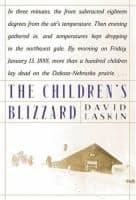 As January, 2021 dawns, we can certainly say we are living in historic times. We are hoping that the year 2021 is the light at the end of the very long 2020 tunnel. That is most likely everyone’s collective wish for the New Year.
As January, 2021 dawns, we can certainly say we are living in historic times. We are hoping that the year 2021 is the light at the end of the very long 2020 tunnel. That is most likely everyone’s collective wish for the New Year.
The historical figure whom we honor and celebrate in January is Martin Luther King, Jr. who would have turned 91 years old this month on January 15. His life and legacy is taught to school children and recalled by those of us old enough to remember. Although the details of his are life interesting, in these tumultuous times, it is his message that needs to be remembered. His dream was that one day all races would be treated equally. Yet, today, many decades later, it seems that his dream has not come to fruition.
Reverend King was not a stranger to tumultuous times and one can’t help but wonder what he would have thought today. It’s likely that his dreams and advice would remain the same. The French writer, Alphone Kerr, said “the more things change, the more they stay the same.”
Reverend King was a hero of the 60s. He was a Baptist minister and a civil rights activist who preached for equal rights, desegregation and, most of all, nonviolence. I am old enough to remember the riots, the antiwar demonstrations and the civil rights protests. In 1968, he was shot and killed while standing on a balcony outside his motel room in Tennessee. He was 39 years old.
Many books have been written by Reverend King, himself, as well as about him. King’s fourth and last autobiography, Where do We Go From Here: Chaos or Community? concentrates on his experiences during the mid-1960s shortly before his 1968 assassination. He rejoiced that the Civil Rights Act of 1964 prohibited segregation and the Voting Rights Act of 1965 gave African Americans the right to vote. However, he continued to fight for the right to adequate housing and income, and quality education. He questioned the existing economic system that was hurting the black community, especially in Chicago. At the time, the country was not only dealing with civil rights, but the war in Vietnam.
Vincent Harding, African American writer and historian, said in his introduction to Where do We Go From Here? that at the writing of the book, King was posing the questions, “Who are we and who are we meant to be?” King himself was quoted as saying, “our most fruitful course is to stand firm, move forward nonviolently, accept disappointment and cling to hope.”
Peniel E. Joseph observes in the most recent book about Reverend King, The Sword and the Shield: The Revolutionary Lives of Malcolm X and Martin Luther King, Jr., that “Today, more than fifty years after King’s death, the struggle for racial justice continues in ways that are both historically recognizable and disconcertingly new.” Joseph presents detailed biographies of both men, their contrasting ideals, but also, the similarities between their political goals. The common interpretation of both men were how different they were in message and strategy. Joseph maintains that in time they evolved to a place where they were more alike toward the end of their short lives. Malcolm became less militant and more interested in human rights issues and King became more radical after Malcolm’s assassination. Shield argued that portraying Malcolm as wielding the sword in pursuit of black dignity and King carrying a shield for the defense of black humanity was only part of the story. He maintained that Malcolm and King, who only met once, began as rivals but developed a later partnership.
By reading books, watching documentaries, and continuing to learn, history can show us perspective. The words and acts of past inspiring leaders do matter in the present if we listen. Vincent Harding maintained that Martin Luther King Jr. was seeking “a perfect union – a path that challenges us all” and, obviously, continues to do so.
Norma Logan is the Literacy Volunteer Coordinator at the Morrill Memorial Library in Norwood, MA. Look for her article in the January 21, 2011 issue of the Transcript and Bulletin.




